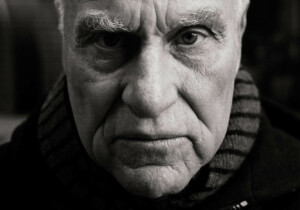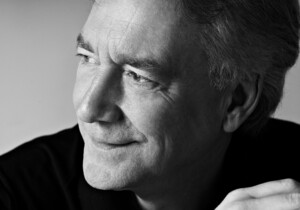William Katavolos, a visionary architect and educator known for his spirit of discovery and invention, passed away on October 19 at the age of 96.
In a career that lasted seven decades, Katavolos predicted a future with houses that can grow their own food; buildings that subdivide; cities that adapt to cultural needs, and ‘liquid architecture’ that can beat like a heart.
He foresaw advances in 3D printing, Building Information Management systems, parametrics, and hydronics. He designed an early glass house and furniture that’s now in the Museum of Modern Art. “Form swallows function,” was one of his revelations.
A faculty member of Pratt Institute’s School of Architecture since the 1970s, Katavolos co-founded its Center for Experimental Structures, a division that encapsulated his belief in the importance of design and research. He was a strong proponent of interdisciplinary learning. Though rooted in architecture, his work spanned the fields of mathematics, physics, nanotechnology and organicism.
“I think it’s fair to say that Bill is kind of our genius loci, sort of spirit of the place …A truly remarkable professor and educator but also an important figure in the history of architecture, and we have been lucky these many, many years to benefit,” said former architecture school dean Thomas Hanrahan, in 2016 during an introduction to one of Katavolos’s last lectures on campus.
Through his teaching and research, Hanrahan said, Katavolos has been “a guiding light for everybody who believes in design and architecture and believes that it can make a difference in the world.”
His work was always ahead of its time, Hanrahan told students, citing his chemistry experiments to create new building materials. “Everything that you’re working on today, he was theorizing in 1959.”
“Bill was an extraordinary thinker, and I had the great privilege of learning of his big ideas for the future of architecture and education,” said Pratt Institute President Frances Bronet, in a statement after his death. “We will miss his perpetual enthusiasm for learning, for making, and for teaching.”
According to a biography prepared by Pratt, Katavolos grew up on Long Island and served as a United States Air Corps Sergeant in the Philippines during World War II. He received an undergraduate degree from Pratt in 1949.
As part of a medical unit during the war, Katavolos learned about the structural systems of the body, information he later applied to his work in architecture. He was friends with everyone from physicists J. Robert Oppenheimer and Richard Feynman to painters Mark Rothko and Robert Motherwell. Like many designers before the advent of computers, he used drawing as the primary way to express his ideas about form and space.
“Katavolos can’t explain anything important without a pen and a piece of paper,” writer David Berreby noted in a 1994 article about him for Discover magazine. “Any kind of paper will do: yellow, white, or lined, notebook or scrap. As he draws, he talks: of social movements, vast planned communities, surprises and revolutions.”
From the late 1940s to the early 1950s, Katavolos collaborated with fellow Pratt alumni Ross Littell and Douglas Kelley to produce a furniture line for Laverne International called “The New Furniture.” One of his pieces, the 1952 “T” chair, is now in the collections of both the Louvre Museum and MoMA.
Sometimes compared to the 1929 Barcelona chair by Ludwig Mies van der Rohe and Lilly Reich, Katavolos’s chair was graceful in its use of industrial and natural materials, with three metal legs supporting a leather sling seat. He later worked on partition systems for the Time-Life and Owens Corning buildings as well as with George Nelson Associates on a suspension ring system for the 1959 American National Exhibition in Moscow.
In the 1950s and 1960s, Katavolos turned his attention to “chemical architecture,” exploring ways that discoveries in chemistry could lead to innovative building forms made with new materials. Featured in a 1960 MoMA exhibition called Visionary Architecture, his work was considered prescient because it anticipated ideas such as buildings that could grow in size through nanotechnology, an area of research and innovation conducted on the scale of atoms and molecules.
In 1961, Katavolos gained attention for an essay entitled “Organics,” which he wrote as a “modern manifesto” on chemical architecture. In the essay, published in Ulrich Conrads’s influential book, Programs and Manifestoes on 20th Century Architecture, Katavolos argued that a “new architecture is possible through the matrix of chemistry. Man must stop making and manipulating, and instead allow architecture to happen.”
He envisioned houses that could grow “to certain sizes, subdivide or fuse for larger functions,” and cities that “at night move like music to other moorings for cultural needs or to produce the socio-political patterns that the new life demands.”
Katavolos taught in Pratt’s Industrial Design Department in the 1950s and 1960s and became part of Pratt’s Undergraduate Architecture faculty in 1973, then received tenure in the early 1980s. He retired from his full-time position in 2008 but continued to teach as a visiting professor.
Starting in the ’70s, Katavolos focused on two areas that he pursued for the next three decades, particle physics and hydronics architecture. He was particularly interested in exploring the potential for change in architecture through organic materials and engineering, including ‘liquid architecture’ that operated like a pumping heart. In the mid-1970s, he built the first mock-up of hydronics architecture, a pioneering work in this field.
Liquids played a major role in his experiments with building materials from the 1970s on.
“If you are immersed in a medium such as water, you can see the surface that separates you from the atmosphere; it is a magical molecular layer that should not be cut, but penetration is permissible,” he said in a 2006 interview with Pratt professor Deborah Gans that was published in BOMB magazine. “Liquid mass is a building material in which form swallows function. It allows us to be incorporated rather than captured.”
In a 2010 interview for the Pratt Undergraduate Architecture Digital Futures Group, Katavolos described how the School of Architecture transformed over the years through new technologies and “thought leadership” as it shifted from modernism to a contemporary embrace of inventive materials and digital modeling.
In his 2016 lecture at the School of Architecture, Katavolos discussed his explorations using the “liquefaction of mass, gasification of space, and solidification of surface” to create walls of enclosed liquids for forms that could house both people and hydroponic gardens. Building on these ideas, he showed drawings for an “autonomous house” that could grow its own food.
One of Katavolos’s most enduring contributions to the study of architecture came in 2000, when he co-founded the Center for Experimental Structures with Haresh Lalvani, professor of undergraduate architecture, as part of Pratt’s School of Architecture.
According to Pratt, the Center was created to bridge what the professors saw as a gap between advanced and emerging technologies of building, drawing on the fundamental principles of design in nature and beyond to rethink the making and shaping of architectural structures and habitable space.
Over the years, many of the structures created within the Center’s Hydronics and Morphology laboratories have been among the first of their kind in the world, including projects involving visual mathematics, architectural genomics, and hyperspace architecture.
Today, Pratt leaders say, the Center for Experimental Structures is unique within schools of architecture and design in the United States, and has strong links between academia and industry. Students come to participate in research at the Center through various academic and professional routes, and the Undergraduate Architecture Department now offers a minor in Morphology.
In 2012, Katavolos received the Rowena Reed Kostellow Award, which annually recognizes Pratt Institute alumni whose work advances the principles of design. Rowena representative Tucker Viemeister said at the time that he was selected “because of his long dedication to multidisciplinary exploration, the beauty of his work, and because he is truly an amazing man.” In 2019, Katavolos was celebrated with Pratt’s Lifetime Achievement Award for his “distinguished and inspirational legacy” in education, architecture, and design.
Katavolos was buried on October 23 at Mt. Olivet Cemetery in Maspeth, New York. Pratt’s School of Architecture and School of Design will hold a virtual Memorial service in his honor on Tuesday, November 10, from 6:00 p.m. to 7:30 p.m. It can be viewed on the School of Architecture Events YouTube channel. The School of Architecture has also established a scholarship fund in memory of Katavolos to help support students interested in pursuing similar work.











